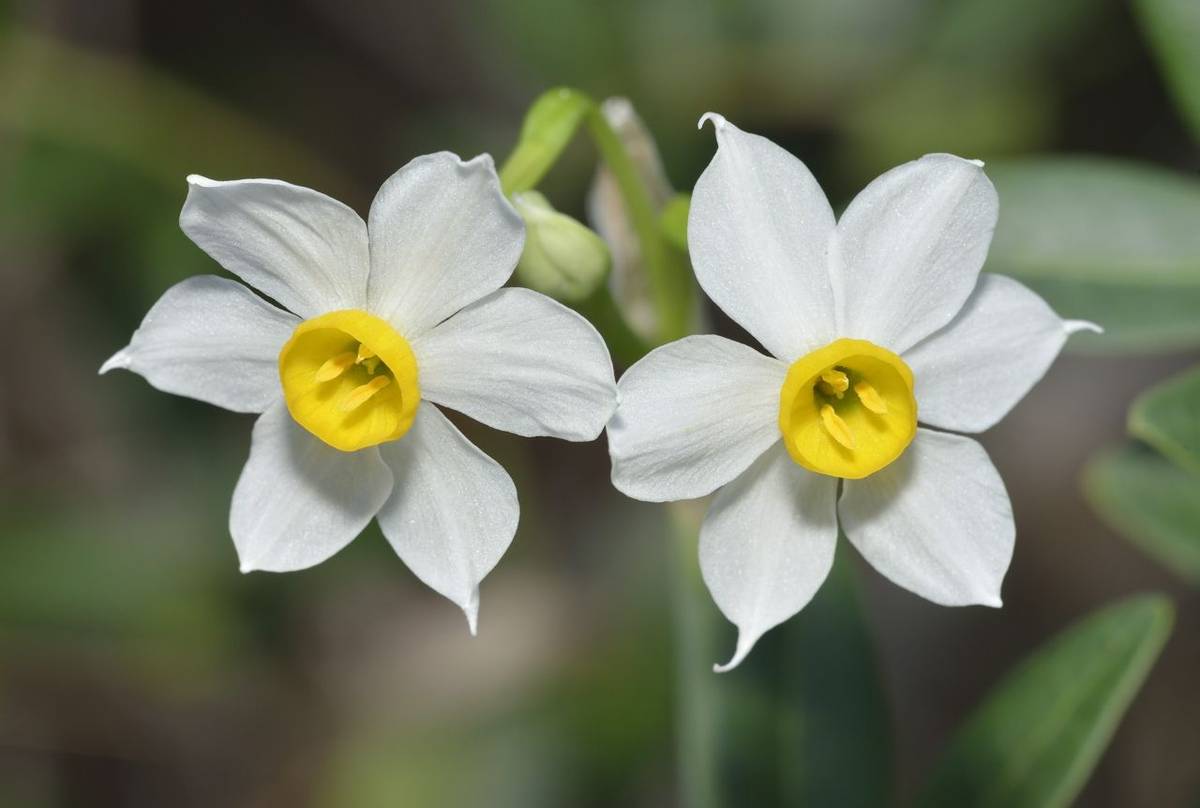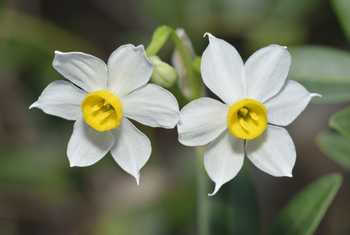A week in November in Cyprus was a welcome bit of warmth and sunshine to brighten up the British late autumn weather. Our group of 16 natural history lovers was competently led by two well-qualified guides, one form the UK and one from Cyprus. This combination ensured that our queries about everything from the contents of delicious-looking pastries to the name of the rarest flower were answered. Our tour around the SW of Cyprus was mainly to look at flowers and the wildlife but we also went to a number of archaeological sites which were most interesting too. The accommodation was excellent and we returned home feeling we had been well looked after and had also learned many new things.
L.B. Wiltshire



Tour Itinerary and Reports
Can I help you?
Cyprus - Autumn Flowers of Aphrodite's Isle
Tour Code: CYP06An 8-day wildlife holiday to Cyprus focusing on the island's autumn-flowering bulbs, but not ignoring the region's migrant birds and ancient history.
£1,695
£1,345
Highlights
Tour Itinerary and Reports
Can I help you?
Quick Enquiry
Summary
This holiday begins with a 3-night stay in the town of Paphos on Cyprus’ western tip. From here we will explore the nearby ‘Tomb of the Kings’, not only one of the finest archaeological sites on the island, but a wonderful area for autumn flowers such as Narcissus tazetta. We will also visit the Asprokremmos Reservoir, a regular wintering site for the endemic Cyprus Warbler and rare Finsch’s Wheatear, plus such flowers as Crocus vernis. Moving north, we will spend our final four nights near the village of Latchi on the edge of the beautiful Akamas Peninsula. As well as exploring the Mediterranean maquis near our hotel, we will also head into the foothills of the Troodos Mountains in search of Cyclamen cyprium and visit the lowland juniper forests of Pegia home to Scilla autumnalis, Colchicum pusillum and Autumn Lady’s-tresses.
- A 2-centre wildlife holiday focusing on Cyprus’s autumn flowers
- Direct flights into Paphos
- Search for Narcissus tazetta, Cyclamen cyprium & Odontites cypria
- Migrant & wintering birds including Finsch’s Wheatear & Cyprus Warbler
- Visit the archaeological site on Paphos Headland
- Explore the beautiful Akamas Peninsula
- Visit the foothills of the Troodos Mountains
- Led by expert naturalist guides
Grading
Grade A. Easy to moderate day walks only.
The island of Cyprus has become an increasingly popular destination for Naturetrek in recent years during spring, a season when the country is awash with flowers and acts as an important stepping stone for numerous tired migrant birds tracking their way north into Europe. The rest of the Cypriot year is then largely ignored by the naturalist, which is a great shame for, after the hot dry summer has passed, the island comes alive once more during the latter half of the year. Soon after the first of the autumn rains have fallen, a colourful variety of flowering bulbs — which have laid dormant in the soil for months — burst into life. Flowers such as Sea Daffodil and Sea Squill, along with many sought-after endemics, including Cyclamen cyprium, Odontites cypria and Dianthus cypria, add a welcome splash of colour to Cyprus’s rugged hills and rocky coastline, and are the focus of this 8-day botanical holiday.
This 2-centre tour begins with a direct flight into the town of Paphos on Cyprus’s western tip. We will be based here for the first three nights of our holiday as we explore the nearby coastline, rocky hillsides and reservoirs. Paphos was founded by the Trojan hero Agapinor and became the capital of Cyprus during the Roman period. The town is dotted with many important Roman remains, the most important of which lie within the Paphos Archaeological Park which sits atop Paphos Headland and has been included in the UNESCO list of cultural and national treasures. The ‘Tomb of the Kings’ and nearby floor mosaics in the House of Dionysius are two of the archaeological highlights here, although our visit will be as much to enjoy the site’s wildlife treasures as the archaeological ones. Flowers to look out for include Taraxacum aphrogenes, Muscari parviflorum and Narcissus serotinus, whilst the headland is also a great area to look for Spiny-footed Lizard and a variety of late migrant birds such as Tawny Pipit, Red-backed Shrike and Wryneck. There is even a chance of a wintering Greater Sand Plover.
We will also head further afield from Paphos to explore the Asprokremmos and Kouris Reservoirs, rich areas for flowers and birds throughout the year. The reservoirs are regular wintering sites for Finsch’s Wheatear, a sought-after passerine that only breeds from eastern Turkey into central Asia, but winters in small numbers in Cyprus. We also hope that there may be one or two lingering Cyprus and Spectacled Warblers here as well as a colourful variety of autumn flowering plants such as Crocus vernis.
Moving on, we will spend our final four nights in a comfortable beach hotel a short distance from the small town of Latchi and close to the ‘Baths of Aphrodite’, an attractive natural pool where the goddess of love was fabled to bathe. Latchi is located at the foot of the beautiful Akamas National Park, an area of outstanding natural beauty covering over 230 square kilometres that has largely escaped the development that has blighted other regions of coastal Cyprus. According to legend, Akamas took its name from the eponymous Greek mythological hero, the son of Theseus, who came to the island after the Trojan War and founded ‘Akamantis’. The area lies at the easternmost point of three major European floral zones and is therefore extremely rich botanically. We will spend much of our time here on foot exploring the dramatic cliffs and coastal maquis in search of such flowers as Arisarum vulgare, Scilla autumnalis, Narcissus tazetta and Spiranthes spiralis (Autumn Lady’stresses), plus trees such as Pistacia terebinthus and Arbutus andrachne, the eastern Strawberry Tree. We will also head inland, however, to the dramatic Troodos Mountains to look for a kaleidoscope of Cypriot endemics including Alyssum akamasicum, Centaurea veneris and Cyclamen cyprium, and visit the Pegeia Forest, one of the best-preserved lowland juniper and pine forests on the island.
Although Cyprus’s rich autumnal flora will be the primary focus of this tour, we will not ignore the island’s birds and other wildlife. Starred Agamas and Troodos Lizards sun themselves on the Carob Trees, whilst Long-legged Buzzard, Chukar, Spanish Sparrow, Sardinian Warbler, the endemic Cypriot race of Coal Tit and the vocal, but elusive, Black Francolin are also likely.
A visit to ‘Aphrodite’s Isle’ would not be complete without sampling the local tavernas, where we will be sure to enjoy some of the region’s culinary highlights before returning to Paphos for our direct flight home.
Outline Itinerary

What's Included?
- Flights
- Accommodation:
We stay in comfortable hotels throughout, all with private facilities.
- Food:
All food is included in the price.
Reviews
-
-
A most enjoyable tour with a wide range of interest. Yannis and David were superb leaders, very knowledgeable, enthusiastic, and friendly. As well showing us all the promised autumn flora and wildlife, they gave us a real insight into the fascinating geology and archaeology of the area. The local taverna lunches and evening meals were an added bonus on a most informative trip.
L.W. North Yorkshire
Dates & Prices
2025

Tour Leader: Yiannis Christofides
Yiannis was born in Cyprus. He studied Chemistry at University College, London, before moving on to Birbeck College to do research. In 1986 he returned to the mountain village of Platres in Cyprus to pursue his interest in botany, photography and natural history. Yiannis is a member of the Botanical Society of the British Isles and is actively researching the flora of Cyprus. His particular interests are the orchids of Cyprus and the sub-alpine plants of the Troodos Mountains. He is the author of the book 'Orchids of Cyprus' and is currently writing a new Flora for Cyprus. Fluent in English, his other interests include languages, geology, history and archaeology.
2026
Prefer to Travel in a Private Group?
For any interested natural history club or society, we can arrange for a private departure of this tour.
Enquire
Why Naturetrek?
At Naturetrek we craft expertly-guided group and tailor-made wildlife holidays and cruises to all seven continents. On one of our holidays, you can be assured that our passionate team will enable you to experience and enjoy the best of the world's wildlife and natural spectacles in as comfortable and rewarding a manner as possible, caring as best we can for the environment in the process. We are proud to provide:
- The widest choice of wildlife holidays worldwide
- Tours managed and led by naturalists, for naturalists
- Outstanding value and exceptional customer service
Furthermore, as a Naturetrek client, our office team are always to on hand to help you – so if you have any queries about your holiday, whether before or after you have booked, we will be delighted to answer them on the phone. Please just give our team a call!
Related articles
Everybody knows that the flowering season is too short. Here are a few of our favourite autumn tours with a strong botanical element... to extend the season!



 Loading search...
Loading search...






















